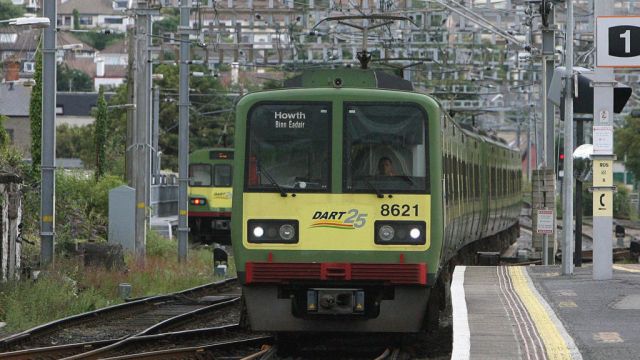The number of vehicles, cyclists and pedestrians travelling into Dublin city centre during morning rush hour has decreased significantly from pre-pandemic levels, with almost 40,000 fewer daily commuters last year according to a new report.
The latest results of the annual Canal Cordon Report conducted by the National Transport Authority (NTA) and Dublin City Council revealed an 18 per cent reduction in all forms of transport used to commute into the city since 2019.
They include a 31 per cent drop in the number of pedestrians entering the city centre in 2022, as well as a 28 per cent decrease in cyclists compared to pre-pandemic levels.
The decrease was not just confined to sustainable transport modes as there was also a 13 per cent reduction in use of private cars over the same period.
The survey, which was conducted last November, measures the transport modes used by inbound commuters at 33 locations around the cordon formed by the Royal Canal and Grand Canal during peak morning traffic between 7am and 10am.
The report noted a total of 177,243 people crossing the cordon in 2022 compared to 217, 223 in 2019, with 55 per cent of the total using public transport including DART and Luas services – the highest percentage in 17 years.
The latest figures also showed an expected increase across all transport modes following the removal of most Covid-19 restrictions in 2022 compared to the two previous years, apart from goods vehicles.
Remote working
Comparisons in the survey are mostly made with 2019 due the large-scale restrictions on movement introduced during the pandemic which affected commuting levels in 2020 and 2021.
The report also noted there had been a shift away from the traditional five-day working week patterns towards hybrid and remote working patterns which emerged during the pandemic.
Separate figures published by the Central Statistics Office (CSO) showed 30 per cent of employees in Dublin usually work from home now.
One of the most dramatic decreases in transport modes since before the pandemic was found in relation to pedestrians, with 7,740 fewer people crossing the cordon in 2022 compared to 2019 – a decrease of 31 per cent.
A total of 16,951 pedestrians commuted into the city last year, which was the lowest annual total since 2011 excluding the years affected by the pandemic.
The report showed the steady growth in the number of people commuting into the city centre by bicycle since 2010 was halted by the pandemic. The latest figures show 9,486 cyclists crossed the canal cordon last year – almost 3,500 below the 2019 peak, representing a 28 per cent decrease.
The report also noted the number of buses crossing the cordon has decreased by 11 per cent since 2019 to 1,642. However, it found the number of services operated by Dublin Bus had actually increased by 4 per cent over the period, but there had been a 41 per cent drop in the number of buses run by Bus Éireann and private operators.
It is estimated the number of bus passengers decreased by around 6 per cent to almost 61,400.
Rail passengers crossing the cordon totalled 25,314 in 2022 – down 32 per cent on pre-pandemic levels, while Luas passenger numbers were down 21 per cent over the same period to 10,892.
Signs of recovery
Figures show the number of cars crossing the cordon in 2022 was 40,207 – down over 6,000 since 2019 or 13 per cent.
The number of cars entering the city during the morning rush hour has now declined by 32 per cent from a peak of almost 58,900 in 2008.
Separately, there was also a significant drop in the number of taxis crossing the cordon in 2022 – down 25 per cent or 1,055 vehicles to 3,327 – while the number of motorcycles was down 38 per cent to 928.
In terms of modal shifts, the latest figures showed a greater proportion of commuters are using buses, private cars and taxis compared to pre-Covid levels, with fewer people using other forms of transport, including walking and cycling.
The report said its latest findings show there were “steady signs of recovery” in the overall number of commuters crossing the cordon which had been increasing continuously from 2010 until 2019 before the trend was interrupted by the pandemic.
It also noted that patronage across all public transport modes was rebounding strongly on 2020 and 2021 figures.
In the longer term, the NTA said it believes the Bus Connects project, increased rail capacity and the development of a network of cycle routes in Dublin will all help to increase numbers using sustainable transport modes.







